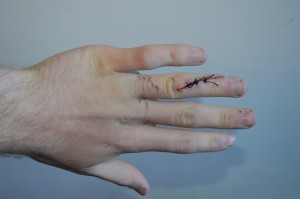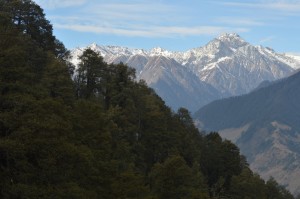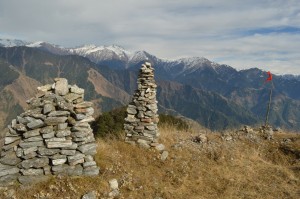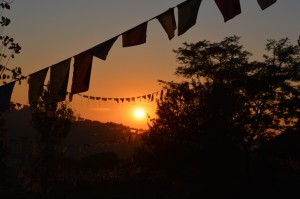I had always thought that the first hospital experience I had on my elective would be treating a patient, as opposed to being a patient. Not to be.
After sitting our 5th year finals we are given two weeks of holiday before resuming classes. Being on a first quarter elective, the first three months of my TI year are overseas- one month in Manali, northern India followed by two months in Gibraltar. I decided that my two weeks holiday would just as well be spent in India, to give me some time to get used to the swing of things in the sub-continent so I could hit the ground running in Manali.During this time I based myself in Bir, a Tibetan refugee colony not far from Manali. Being in the foothills of the Himalayas, Bir provided a great base for some jaunts into the hills behind. It was towards the end of one of these walks that I managed to turn myself into my first patient.
I had spent a day trip walking up a mountainous road to get some photos of the Himalayas. The day was getting on and I was still 15km from Bir when I went flying through the air, landing on a rocky outcrop. Although I managed to absorb most of the landing with my legs, my left hand got cut up.
I was very lucky in three respects. Firstly, I didn’t break anything (most importantly the camera, but my bones also came out intact). Secondly, the whole thing was observed by five locals who helped me pick myself up. One of the locals was even a taxi driver who was parked a mere 200m away. Shaken up, I didn’t have any hesitation in asking for a ride down to Bir.The third point where I struck fortune was that hand wounds had been my bread and butter on the weekends that I was an RMIP student in Balclutha Hospital. I quickly checked for any nerve or blood vessel damage before putting on a couple of gloves, wrapping my hand in some compression bandaging and elevating it as best I could.
A forty minute taxi-drive later and I was back in Bir. To stem the bleeding I enlisted the assistance of Bryan and Kat, a New Zealand couple that were staying in the same lodging. Between the three of us we decided that it was going to need stitches.

Despite anaesthetic not working and an extra large needle and thread size, David's hand was successfully patched up by a local rural GP in Bir, India.
While it’s true that the local anaesthetic didn’t work properly and a lack of equipment meant that the needle and thread size was roughly double what would be used at home, I still felt that I would be as happy with the final product as if it was done in New Zealand.
As he was doing the stitches I was chatting to the doctor, gathering an idea of what life was like for a rural doctor in India. He was the sole GP in a region of around 7,000 people. Being a GP in the public sector, he was required to see anyone who walked through the doors- which for me was quite beneficial but meant that he saw an incredible 70-80 patients per day. What I found even more surprising was that this was considered quite a small workload by Indian standards- many doctors see over 100!
Despite an unusual beginning to my time learning about medicine in a developing country, I’ve started with some pretty good impressions, even though it cost me… I’m looking forward to what the next few weeks brings; hopefully no longer being on the receiving end.

